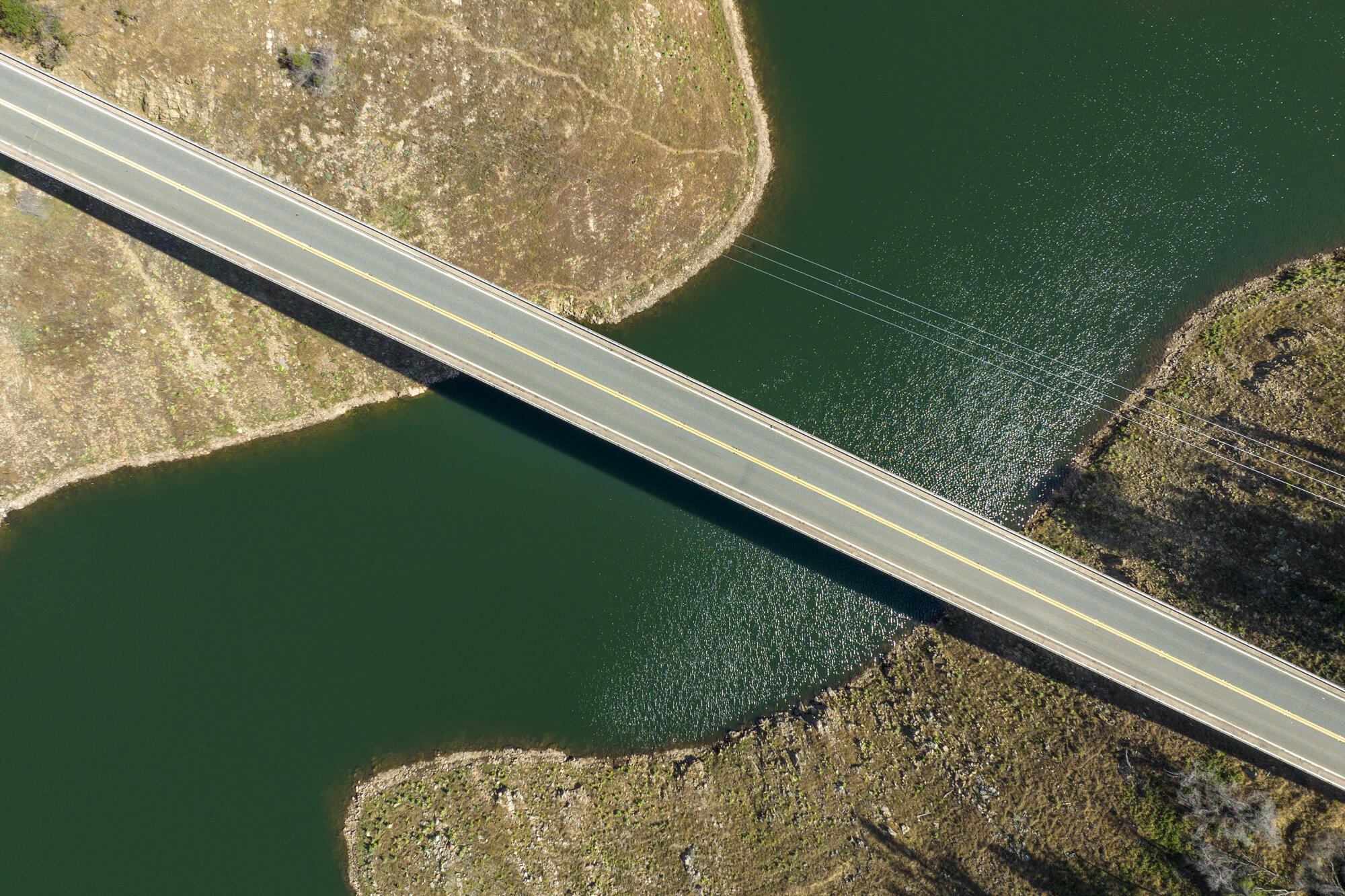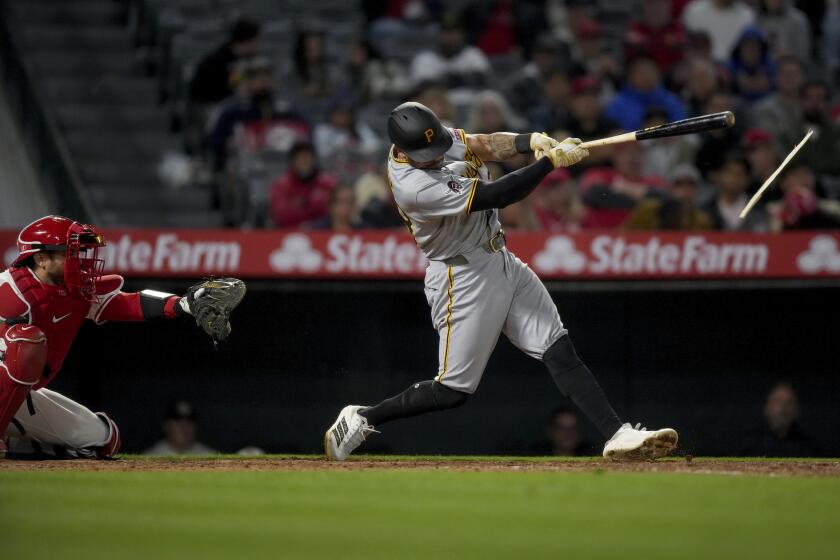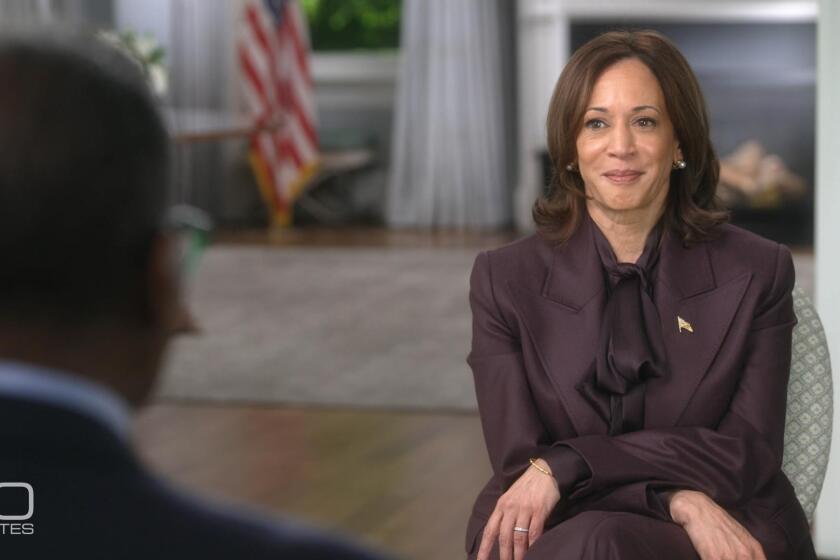
- Share via
Following two wet winters that boosted California’s water supplies, Gov. Gavin Newsom has officially lifted a drought emergency declaration in 19 counties that are home to 70% of the state’s population.
The decision will roll back certain drought-related state authorities in counties including Los Angeles, San Francisco, San Diego, Orange and Riverside, among others.
At the same time, Newsom decided to keep the drought state of emergency in effect in 39 counties where state officials say significant effects of the severe 2020-22 drought have persisted, including depleted groundwater supplies and threats to native fish.
These 39 counties include parts of the Central Valley and in the watersheds of the Scott, Shasta and Klamath rivers, among other areas.

Newsom referred to this week’s extreme heat wave as he explained why his administration is retaining certain drought authorities in parts of the state.
“As this week’s weather makes clear, California and the West experience extreme weather swings that exacerbate our water challenges and make it more important than ever that we build a climate-resilient water system,” Newsom said. “This targeted action is responsive to current conditions while continuing the tools and support for work underway to help future-proof water supplies in the most impacted communities.”
State officials said Newsom’s order responds to the improved conditions in parts of the state while continuing efforts to support drought recovery. They said where certain drought measures remain in place, they will help the state address continued impacts to local water supplies.
“We continue to help local communities recover from drought conditions,” said Wade Crowfoot, California’s natural resources secretary. “In some cases, the powers that we have under these orders are quite helpful to support local communities recovering.”
Even after a year and a half of wet weather, research shows the American West has experienced the driest 25-year period in 1,200 years. When might the megadrought end?
The measures that will remain in place in 39 counties include suspending environmental requirements for certain groundwater recharge projects, giving the state natural resources secretary the authority to suspend environmental requirements for conservation projects and allowing the Office of Emergency Services to continue providing disaster assistance funding. State agencies will also continue to have the authority to adopt emergency regulations to require minimum flows in the Klamath River and Clear Lake watersheds to protect salmon and other fish.
“We know that our water extremes are getting more extreme. Our dry periods are becoming drier. Our wetter periods are becoming wetter,” Crowfoot said. “So business as usual is no longer an option. That is in part why we’re maintaining some of these provisions, to enable us to move more quickly to allow communities to recover from these impacts, but also to prepare for what will be worsening droughts and floods over time.”
California suffered through the state’s driest three-year period on record from 2020 through 2022.
Newsom declared a statewide drought emergency in October 2021 and called for Californians to voluntarily reduce water use 15%.
The drought ended dramatically in early 2023 as one of the wettest winters on record unleashed flooding and blanketed the Sierra Nevada in heavy snow.
In March 2023, following that series of storms, Newsom rolled back some of the most stringent drought measures, including an order that had required urban suppliers to activate conservation plans for a shortage of 20%.
The termination of the drought emergency in 19 counties ended provisions that had enabled emergency conservation measures, suspended restrictions on water diversions during storms for groundwater recharge, and suspended requirements of state contracting laws, among other things.
In addition to lifting the drought measures, the governor rescinded provisions of prior executive orders that were aimed at recovery efforts following the flooding in 2023.
During the last two wet years, the governor’s drought executive order effectively became a “drought-flood” executive order, enabling expanded efforts to capture floodwaters and address damage, said Karla Nemeth, director of the state Department of Water Resources. She said it’s now the drought provisions that have a “long tail” and are still needed in parts of the state.
“Even if there isn’t a hydrologic drought, we still have the supply challenges,” Nemeth said.
Siding with environmental groups, a judge has ruled that Sonoma County must take action to protect creeks and salmon from excessive groundwater pumping.
In the coming decades, climate change is projected to shrink the amount of water California can deliver in an average year. The Newsom administration’s long-term water plans call for California to prepare for an estimated 10% decrease in the state’s water supply by 2040.
According to the U.S. Drought Monitor website, about 41% of the state is currently classified as being abnormally dry or in a moderate drought. The unusually dry regions include large portions of Northern California and the southeastern corner of the state.
“We have full reservoirs. That’s a really good thing. But we also have dry conditions on the horizon. We’ve had really high temperatures this summer that are kind of reminiscent of the summer of 2020,” at the beginning of the last drought, Nemeth said. “So at the onset of yet another year that may provide a degree of extremes, we know we continue to have these counties that we consider to be kind of drought hot spots still because of supply problems, and we’re ready to address those issues as they arise.”









